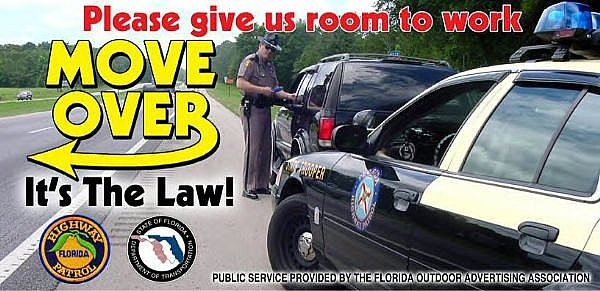
Surveys have shown that many people have not heard of the Move Over Law for motorists. All but seven states have relatively new driving laws in effect which require the following: When passing a stopped emergency or law-enforcement vehicle with its flashing lights on, you must either vacate the closest lane, or significantly reduce your speed. Every state has implemented the law slightly differently, and the states that don't yet have the law probably will very soon.
The law should be taken very seriously because it can save the lives of those who are trying to protect and/or help us. Breaking the law can result in a hefty fine, and in some states, jail time. This article explains the steps for understanding and abiding by the Move Over Law, and includes a link to the website of the national Move Over America campaign to raise public awareness of the law.
Every state is different, but no matter how your state has chosen to word its version of the law, the general idea is the same. If you see an emergency vehicle pulled over at the side of the road with its flashing lights on, and you are traveling in the same direction, you must vacate the closest lane if such a lane exists for you to move over to, and it is safe for you to do so.

If you are unable to move over for either of the two reasons above, you must reduce your speed to 20 mph below the posted speed limit. Keep in mind that if you are in a 45 mph zone, you are probably doing around 53 mph, but you must slow down to less than half of that if you cannot move over.
In most states, the law applies to any vehicle that has its emergency lights flashing such as police or other law enforcement vehicles, fire vehicles, public and private ambulances, and tow trucks. Keep in mind that such workers have to get out of their vehicles, and as such are extremely close to rapidly moving traffic. The law does not apply to vehicles that do not have their lights flashing, such as police cars that are pulled over waiting to catch speeders. In this case the driver typically just remains in his/her car, and is relatively safe.

The fine for disobeying the Move Over Law varies from state to state, and in some states you can have your license suspended and even have to do jail time. With that said, no one is expecting you to get into an accident yourself, or cause one for others. On highways, you should always be scanning the road ahead of you. If you see a stopped emergency vehicle ahead, you should probably have enough time to vacate the closest lane if you are in it.
There are times, however, when you simply don't have sufficient time to react, or there is no room for you to move over safely. Never just cut someone off and risk causing an accident. In those cases the alternate action comes into effect. While passing the stopped emergency vehicle, reduce your speed to 20 mph lower than the posted speed limit, not 20 mph lower than your current speed which may be 20 mph over the limit in the first place. Again, use your common sense and be careful. Don't just slam on your breaks to go from 82 to 45 mph in one second and cause an accident.

Keep in mind that the drivers behind you may not understand why you are abruptly changing lanes or breaking, nor are they necessarily expecting you to do so since they may not understand and/or care about the law. It is doubtful that you will receive any type of punishment if you make a good faith effort to obey the law as best as you safely can. The whole point is simply to protect the welfare of workers who provide aid to us, many of whom have been injured or killed by motorists who don't take this law seriously.
For more information about the Move Over Law, including state-by-state information, see the link in the Resource section below. Remember, move over or slow down for stopped emergency vehicles.
